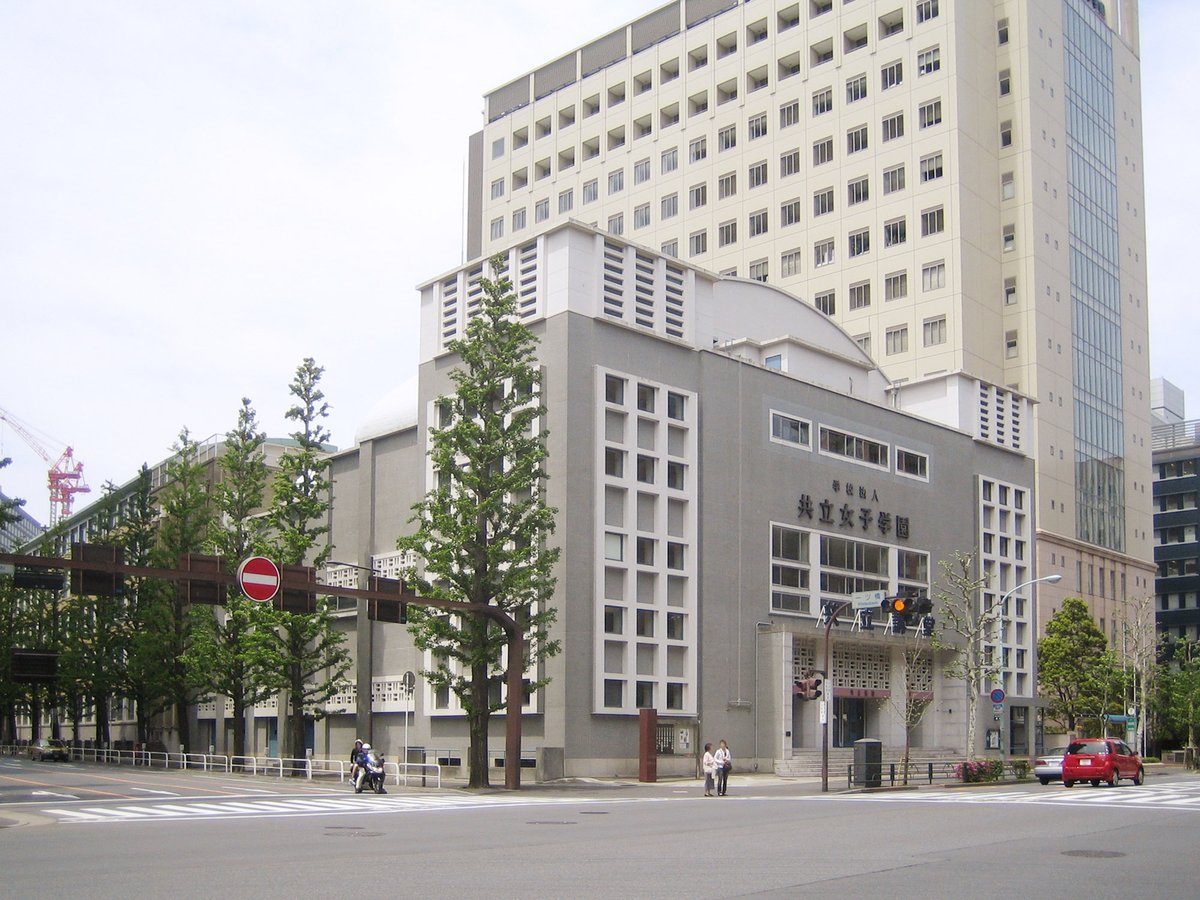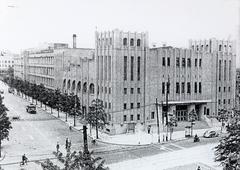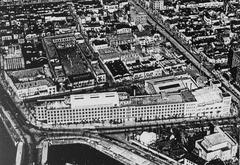
Kyoritsu Women’s University Visiting Guide: Tokyo, Japan
Date: 14/06/2025
Introduction: A Historic Institution in Central Tokyo
Kyoritsu Women’s University, located in Tokyo’s Chiyoda ward, is a storied institution with over 130 years of commitment to advancing women’s education and empowerment in Japan. Established in 1886 during the modernization wave of the Meiji era, the university broke new ground by providing women with vocational and academic opportunities at a time when such options were rare (Kyoritsu Women’s University History; Old Tokyo). Today, it stands as both an academic leader and a cultural landmark, set amid some of Tokyo’s most famous attractions, including the Imperial Palace and Jimbocho Book Town (Univ Journal; Educativ).
This guide offers a comprehensive overview for visitors—covering the university’s historical development, essential visitor information, campus highlights, accessibility, and tips for making the most of your visit.
Table of Contents
Historical Overview
Founding and Early Development (1886–1928)
Kyoritsu Women’s University began as the Kyoritsu Women’s Occupational Institute, founded by 34 progressive academics, including Haruko Hatoyama and Kyuichiro Nagai. Its mission was revolutionary: to equip women with skills for self-reliance and meaningful participation in society, reflecting the spirit of “Kyoritsu” (standing together). In an era when less than 0.1% of Japanese women advanced to post-secondary education, the institute’s focus on practical and vocational curricula was groundbreaking (Kyoritsu Women’s University History; Facts and Details).
Support from figures such as Emperor Meiji and the Empress—who purchased student-made embroideries—helped the institute expand, and its growing influence led to the acquisition of more land and increased student enrollment.
Transition to Academic Institution (1928–1949)
In 1928, the institute advanced to college status, shifting its curriculum to broader academic studies and reflecting changing societal views about women’s intellectual and professional potential. By 1939, it was one of Japan’s leading women’s colleges, boasting 1,430 students and 120 faculty members (Old Tokyo). This period paralleled educational reforms in Japan, including the College Ordinance of 1918, which expanded higher education opportunities for women (Facts and Details).
Postwar Reforms and Modern Era (1949–Present)
After World War II, educational reforms transformed Kyoritsu into a full university in 1949, complete with a junior college and graduate school. Its mission—empowering women through education and self-reliance—remained central even as it adapted to new societal needs. Today, Kyoritsu Women’s University offers undergraduate, graduate, and doctoral programs across six faculties, including Home Economics, Literature, International Studies, Nursing, Business, and Architecture and Design (Univ Journal).
Distinguished alumni include public figures such as actress Nanao and politicians Yukiko Miyake and Michiko Ueno (EduRank).
Visiting Information
Hours, Tickets, and Entry
- Campus Hours: Generally open to the public on weekdays from 9:00 AM to 5:00 PM (closed on national and university holidays).
- Entry Fee: Free for casual visits to outdoor spaces; some events (lectures, concerts, exhibitions) may require tickets or prior registration (Kyoritsu Kodo Event Schedule).
- Tours: Guided tours are not routinely offered but may be available during open campus days or by appointment.
Campus Access and Accessibility
The campus is designed to be barrier-free, with ramps, accessible restrooms, and elevators. Visitors with mobility needs should notify the administration in advance for support.
Directions and Transportation
Located at 2-1-1 Hitotsubashi, Chiyoda, Kyoritsu Women’s University is easily reached by Tokyo’s extensive public transit system:
- Jimbocho Station (Tokyo Metro Hanzomon Line, Toei Mita Line, Toei Shinjuku Line): 1-minute walk from Exit A8
- Ochanomizu Station (JR and Tokyo Metro): Short walk to campus
- Takebashi Station (Tokyo Metro Tozai Line): 3-minute walk from Exit 1b
- Kudanshita Station (multiple lines): 5-minute walk from Exit 6 (Kyoritsu Women’s University Access Map)
Campus Highlights
- Kyoritsu Kodo Auditorium: A major cultural venue with 2,010 seats, hosting concerts, lectures, and public events (Kyoritsu Kodo Event Schedule).
- Child and Family Support Center: Community-oriented programs and educational support.
- Modern and Traditional Architecture: Explore a blend of historic and contemporary buildings, including the nine-story Building No. 2 with energy-efficient features.
- Livcomo Library Commons: An innovative, communal learning hub.
- Global Floor: A center for international student support and cultural exchange.
Nearby Attractions
Take advantage of the university’s prime location to visit:
- Imperial Palace East Gardens: Historic gardens and ruins, ideal for a tranquil stroll.
- Jimbocho Book District: Tokyo’s center for secondhand bookstores and literary cafés.
- Yasukuni Shrine: A significant Shinto shrine.
- National Museum of Modern Art, Tokyo: Notable art collections within walking distance.
- Kitanomaru Park and Chidorigafuchi: Seasonal cherry blossom viewing spots.
Visitor Etiquette and Tips
- Respect Campus Spaces: Avoid entering restricted areas (classrooms, offices) without permission.
- Photography: Permitted in outdoor areas; always ask before photographing people or inside buildings.
- Quiet Enjoyment: Maintain a peaceful environment, especially during class hours.
- Check Event Schedules: Visit during school festivals or open campus days for a livelier experience.
- Best Times to Visit: Spring and autumn offer ideal weather and beautiful campus scenery (Travelswithelle).
Frequently Asked Questions (FAQ)
Q: Is there an admission fee?
A: No, campus grounds are free to enter. Special events may require tickets.
Q: What are the university’s visiting hours?
A: Weekdays, 9:00 AM–5:00 PM (closed on holidays).
Q: Are guided tours available?
A: Not regularly, but open campus events and certain festivals feature tours.
Q: Is the campus accessible for those with disabilities?
A: Yes, with ramps, elevators, and accessible facilities. Notify staff if you need assistance.
Q: Can I take photos?
A: Outdoor photography is allowed. Always seek permission before photographing people or inside buildings.
Q: How do I get there?
A: Use nearby stations: Jimbocho, Ochanomizu, Takebashi, or Kudanshita.
Conclusion and Call to Action
Kyoritsu Women’s University offers a unique window into Japan’s educational and cultural transformation. Its tranquil campus, rich history, and proximity to Tokyo landmarks make it an ideal destination for educational tourists, history buffs, and those seeking an oasis in the city. Plan your visit by checking the university’s official website for updated hours, event schedules, and accessibility information. Enhance your experience by exploring nearby historic districts, attending campus events, and connecting with the university’s vibrant community.
For more travel inspiration and tailored itineraries, download the Audiala app and follow us on social media for the latest updates.
Sources and Official Links
- Kyoritsu Women’s University History
- Old Tokyo
- Univ Journal
- Facts and Details
- EduRank
- Japanrar
- The Conversation
- Educativ
- Kyoritsu Kodo Event Schedule
- Kyoritsu Women’s University Access Map
- Travelswithelle































































































































































































































